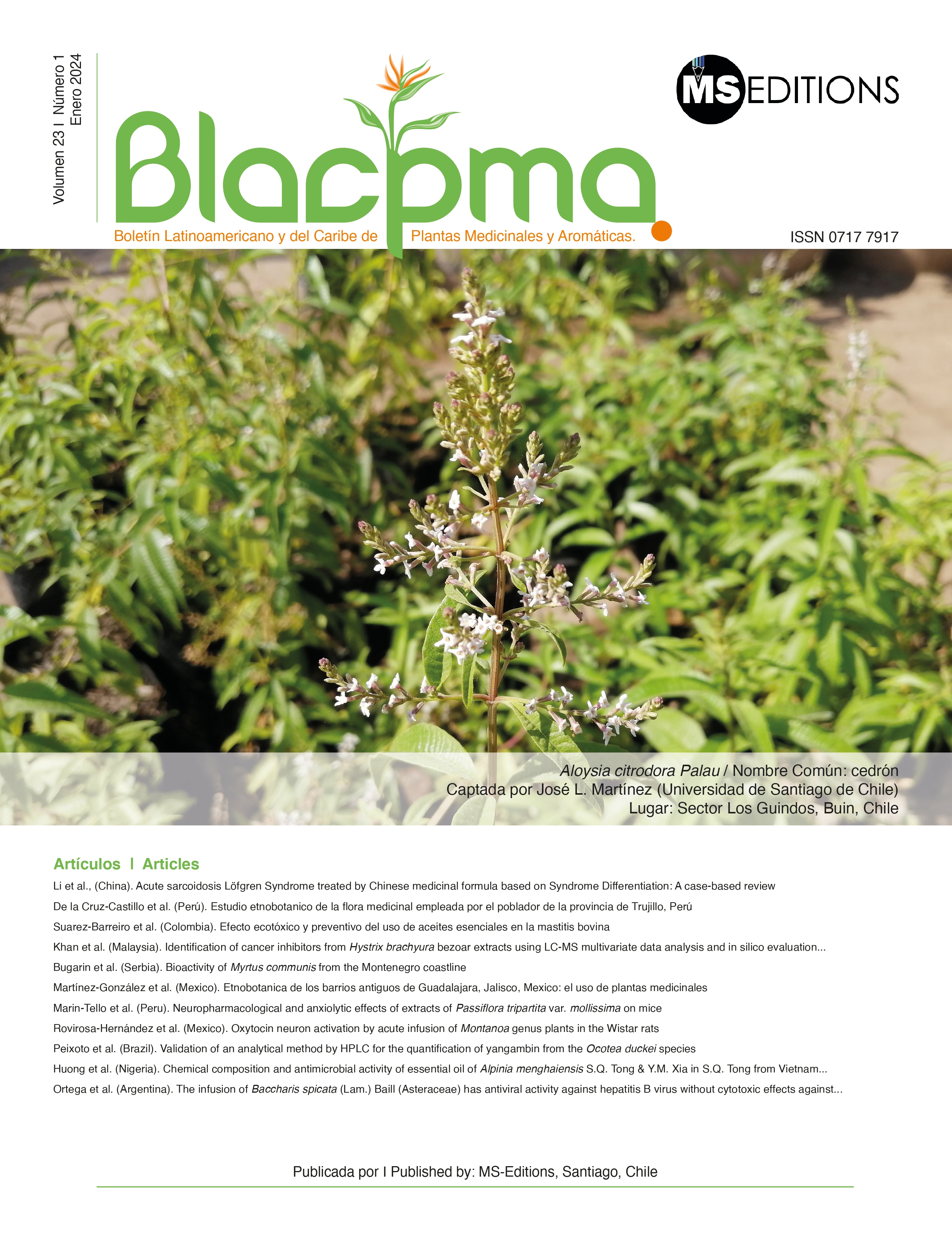Bioactivity of Myrtus communis from the Montenegro coastline
DOI:
https://doi.org/10.37360/blacpma.24.23.1.5Abstract
Although numerous studies have demonstrated the biomedical potential of Myrtus communis L., (Myrtaceae) data on myrtle from Montenegro are scarce. To evaluate antioxidant, antimutagenic and antibacterial activity of myrtle methanolic extracts. Antioxidant activity was evaluated by measuring free radicals scavenging activity, reducing power and enzyme inhibition. The strongest scavenging activity was towards DPPH radical (2,2-diphenyl-1-picrylhydrazyl) (IC50 1.69-2.25 mg/mL) and superoxide anion (IC50 0.56 to 0.88 mg/mL), followed by high reducing power (428-472 mgAA/g.DE) and inhibition of XOD (IC50 0.308-0.6261mg/mL). Antimutagenic activity was evaluated in reverse mutation assays with Escherichia coli WP2 oxyR mutant IC202 and deficient in the induction of antioxidant enzymes. The myrtle extracts strongly inhibited mutagenesis induced by t-BOOH, reaching 70% at the highest concentration applied. Antimicrobial activity was examined on eight different bacterial strains. Gram-positive bacteria, S. epidermis, S. aureus and M. flavus demonstrated the highest sensitivity towards extracts (MICs 4.5-9 mg/mL), but significantly lower towards essential oil (MIC 0.42-3.32 mg/mL).
Downloads
Downloads
Published
How to Cite
Issue
Section
License

This work is licensed under a Creative Commons Attribution-NonCommercial-NoDerivatives 4.0 International License.

